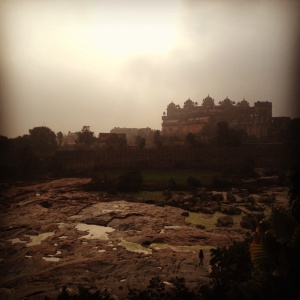I’m really bad at making rice.
Not just a little bit. I genuinely struggle making rice do what I want and for someone who styles themselves as a self-declared Subcontinental gastronomic aficionado (sort of), this presents a serious problem. How can I possibly talk about and construct the intricacies and the simplicities of the diversity of Subcontinental food if I can’t even boil a pot of small white grains?
A couple of months ago I was cooking a Konkani* coconut, kokum* and kingfish concoction for a loved one. I was having one of those rare days in the kitchen where everything was going right for me. My fish was beautiful and fresh, my coconut came out of its shell with a minimum of elbow grease and a celebratory glass of champagne and my masala was better than it had ever been. The whole house was rolling with whiffs of roasting coconut, sputtering mustard seeds and curry leaves and Asha Bhosle was pumping out the soundtrack to Teesri Manzil.
Everything was swimming along swimmingly until I pulled out my pantry drawer to find my rice. In the bag was only about a cup of a short grain white rice which would have been just enough to soak up the juices for two people. I knew that if I buggered this rice up then we would have to eat dinner with a straw, and sure enough I got lost in champagne and burnt my rice black.
Panicking I scoured my cupboards for some form of carbohydrate, something to soak up my tangy, oily, light and sweet sauce that I had laboured all afternoon over. No rice. No flour. No semolina. No potatoes. All of my usual avenues of South Asian starch had been exhausted. Desparate, I found a lonely packet of mograbieh* in the back of the pantry collecting dust.
Fifteen minutes later I had my Konkani coconut kingfish couscous and the flavours and textures of both Haifa and Harihareshwar met for what was a very happy union. The mograbieh was texturally exciting with the oiliness of the sauce and the crunchiness of the cashew chatni I had also prepared and the whole meal was a triumph.
This rambling story about how I can’t cook rice and have only a periodically stocked pantry does have a point.
For me this meal -one of the yummiest I’ve ever made- represents how Subcontinetal food can flourish when explored outside of its own orthodoxies. People often descibe Italian and ‘Indian’ (a reductive title for all South Asian food) gastronomy as being ‘nonna’ cuisine, food whose secrets are kept in the apron strings of simple salt of the earth recipes and legacies. While this is indisputable, it represents a traditionalism which ensures that on every ‘Indian’ restaurant menu in Australia you will find butter chicken, samosas, tikka masala, gulab jamun and not a whole lot else.
For me South Asian food is unbearably exciting. I get excited by learning how to make things the traditional way like when I learnt how to make my own mawa/khoya* by boiling it for six hours in my cast iron kadhai*. I get excited by combining western and Indian cooking techniques like the time I made a Romesco sauce with curry leaves, tamarind and black cardamom. And I get excited by making up things that I love to eat like my Nimbu Pani* granita with mukhwaas*
I’m excited to show you what excites me and I hope that this blog – which will be dedicated to exciting Subcontinetal food – how to make it, where to find it and how to eat it- gets you a little bit excited about what there is to find beyond butter chicken.
* Konkani – The Konkan coast runs between Mumbai and Goa
Kokum – A fruit from the Mangosteen family used as a souring agent in cuisines all down the west coast of India.
Mograbieh – Pearl Couscous
Mawa/Khoya – Milk Solids
Kadhai – Indian Wok
Nimbu Pani – Spiced citrus drink
Mukhwaas – Spiced candied fennel traditionally eaten as an after dinner palate cleanser